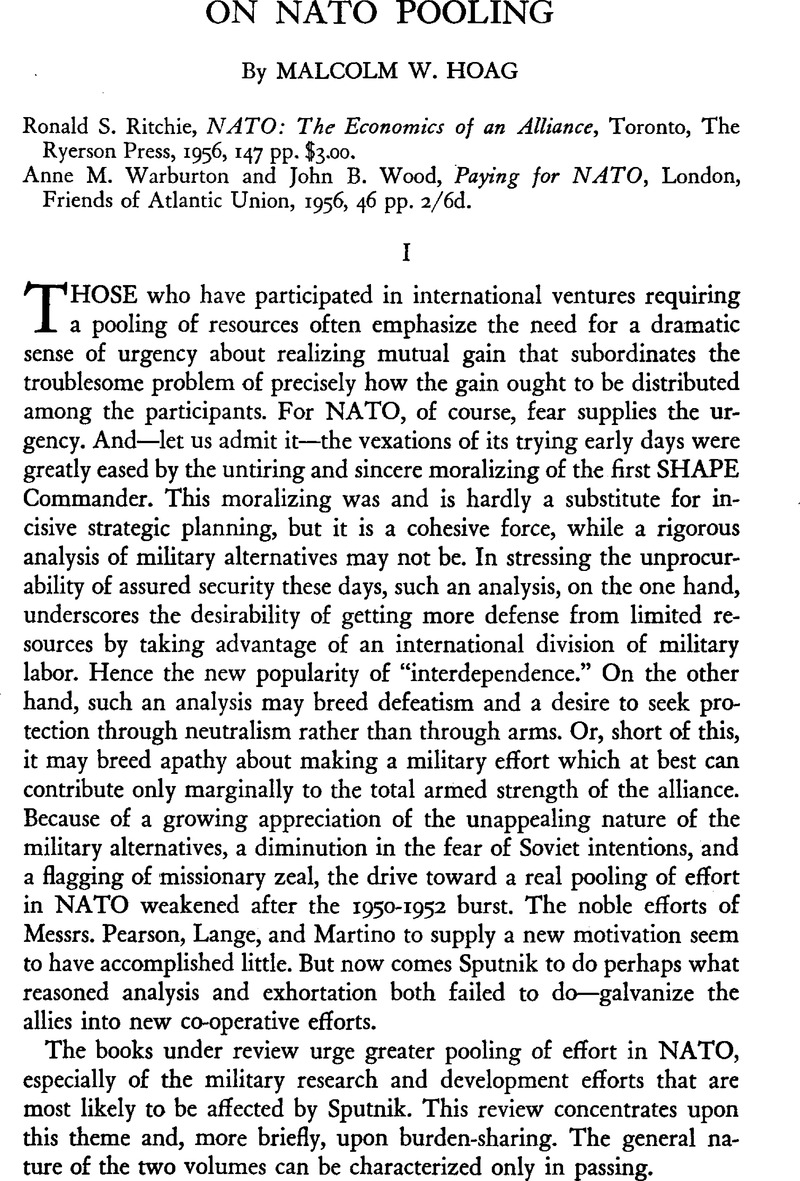Article contents
On NATO Pooling
Review products
Published online by Cambridge University Press: 18 July 2011
Abstract

Information
- Type
- Review Articles
- Information
- Copyright
- Copyright © Trustees of Princeton University 1958
References
1 Grant military aid by the United States, however, stipulates that the equipment supplied must be used only for self-or collective defense. If mis stipulation is rigidly enforced, it is risky for our allies to depend upon these supplies, inasmuch as they could not use the supplies in military ventures like the recent Anglo-French conflict in Egypt. But it appears that the stipulation is not rigidly enforced, and probably could not be. In this case the stipulation merely creates inefficiency in our military aid programs because U.S. officials (1) are constrained to look to the equipment “deficiencies” of the forces formally assigned to collective defense (“NATO-committed”) to the neglect of more important deficiencies elsewhere in allied forces that are equally relevant for emergency collective action; and (2) become involved in tediously keeping track of the equipment supplied to no special purpose.
2 Gilbert, M. and Kravis, J. B., An International Comparison of National Products, Paris, Organization for European Economic Cooperation, 1954.Google Scholar
3 Hoag, M. W., “Economic Problems of Alliance,” Journal of Political Economy, LXV (December 1957), pp. 522–34.CrossRefGoogle Scholar
4 Schelling, T.C., International Cost-Sharing Arrangements (Essays in International Finance, No. 24), Princeton, N.J., 1955.Google Scholar
- 1
- Cited by

